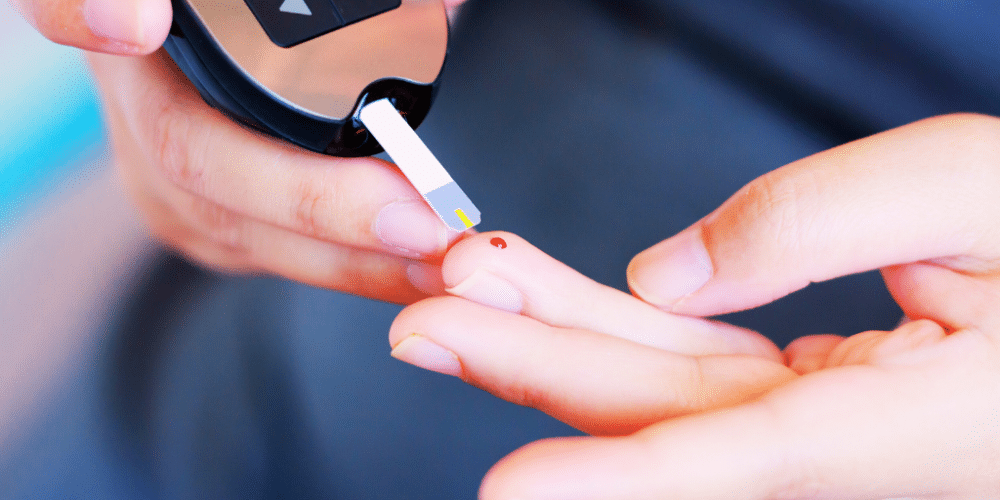
Have you ever felt that painful burning sensation in your feet, like electricity shooting through your toes? Or a constant tingling in your hands, as if they were filled with fine needles? Perhaps you spend your nights scratching, thinking it’s an allergy, but your skin is perfectly fine. Or maybe you feel an indescribable agony from the mere touch of a bedsheet. It’s like having a frayed, high-voltage cable inside your own skin, firing off without warning and without control. These are not random signals. They are distress calls from your peripheral nerves.
Today, we’re going on an investigation to uncover the four hidden poisons that most often cause this “short circuit” in your body. Understanding this list is the first and most crucial step to silencing this pain, protecting your nerves from permanent damage, and taking back control of your well-being. And I guarantee that the number one poison on our list will shock you. It’s something that millions of people use every day to treat a common problem, never imagining the connection to the pain in their feet and hands. (This article draws on the knowledge of Dr. Andre Wambier)
Key Takeaways
- Location Matters: Neuropathy often starts in the hands and feet because they have the longest, most vulnerable nerves in your body’s “electrical wiring.”
- Hidden Dangers: The root cause of your nerve pain might not be obvious. It can stem from hidden “poisons” like heavy metals in your food, inflammatory ingredients, and even common, necessary medications.
- Internal Damage: A process called glycation, essentially an “internal caramelization” caused by high sugar intake, can make your nerves stiff, inflamed, and dysfunctional.
- Medication Awareness: Certain essential medications can deplete vital nerve-protective nutrients like Vitamin B12. You should never stop taking prescribed medication, but you can work with your doctor to monitor your nutrient levels and mitigate these effects.
- You Have Power: You can protect and even help regenerate your nerves by avoiding these toxins and supplying your body with key nutrients like B vitamins, Alpha-Lipoic Acid, magnesium, and zinc.
Why Your Hands and Feet First?

Before we get to the culprits, let’s answer a key question: Why does the assault almost always begin in the extremities of our body? The answer is the key to understanding everything. Think of your nerves as the electrical wiring of your body. The nerves that go from your brain to your arms are shorter than the nerves that leave your spine and travel all the way to the tips of your toes. These are the longest cables and, therefore, the most vulnerable. They require the most energy and maintenance to function perfectly. Science calls this “dying-back” axonal degeneration—the damage appears first in the part most distant from the “power station.” Therefore, your feet and hands are the early warning alarms telling you that something systemic—affecting your whole body—is wrong. Now that you understand the “why,” let’s get to the “what.”
4. Heavy Metals: The Invisible Invaders

The fourth poison that attacks these long “wires” is heavy metals. Mercury, lead, arsenic… they are direct poisons to your nervous tissue because they attack the mitochondria, the small power plants inside your cells. A nerve without energy is like a light bulb with a broken filament: it flickers, fails, and eventually goes out.
How do they get into our bodies? Often through a process called biomagnification, with the fish food chain being the prime example. Imagine a river near a gold mine that uses mercury. Small fish absorb a little bit of mercury. A piranha eats ten of those small fish. A larger peacock bass eats five of those piranhas. A massive golden dorado eats several of those bass, concentrating the mercury from ALL of them. When you eat that large fish fillet, you’re consuming the mercury accumulated from hundreds of other fish.
The solution is the “Plate Rule”: If the whole fish, from head to tail, fits comfortably on your dinner plate, it’s generally safe. Think of sardines, anchovies, tilapia, and trout. These are fish with short life cycles that haven’t had time to accumulate large amounts of metals. It’s that simple.
But the danger isn’t just in fish. Think of the ancient Romans, who many believe were driven mad by lead. The main source of poison for the Roman elite was likely their wine. They created a sweetener called sapa, a grape syrup boiled slowly in lead pots until thick and sweet. This syrup was added to almost all wine, turning every luxurious toast into a small dose of poison that, over the years, caused severe neurological damage, infertility, and gout.
Today, we don’t have Roman sapa, but toxic “secret ingredients” are still around. Heavy metals can be found in untreated well water, old artisanal ceramics with lead-based glazes, and lead paint in older homes that turns into an invisible toxic dust. And what about our electronic waste? Improperly discarded cell phones and batteries are time bombs of lead, mercury, and cadmium for our environment. The lesson, from both Rome and today, is the same: the greatest dangers are often those we cannot see or taste.
3. Inflammatory Foods & Glycation: Are You Caramelizing From the Inside Out?

It’s no use protecting yourself from external poisons if you are producing a powerful poison inside your own body every single day. And the scariest part is that it’s created from foods many consider harmless. This brings us to poison number three: inflammatory foods and the process of glycation.
Have you ever seen how sugar turns brown, sticky, and hard when you heat it? That’s caramelization. Now, imagine that same process happening slowly inside your body. When you consume too much sugar and refined carbohydrates (bread, pasta, cakes), the excess glucose in your blood begins to “caramelize” the proteins and fats in your body. This creates toxic compounds called Advanced Glycation End-products, or AGEs.
These AGEs cause your tissues, including your nerves, to become rigid, inflamed, and dysfunctional. Think of your skin losing elasticity and getting wrinkles, or your joints becoming stiffer. Glycation is a process of accelerated aging that affects the entire body, and your long, delicate nerves are one of its main victims. You’re not just gaining weight; you are literally stiffening from the inside out. The solution is to drastically reduce sugar and refined flours. Every time you swap a piece of toast for an egg at breakfast, you are fighting glycation and protecting your body’s wiring.
2. Uncontrolled Diabetes: The Leading Cause of Neuropathy

If you found that process of internal “caramelization” concerning, wait until you see what happens when it becomes chronic and transforms into our poison number two. It’s no longer just a silent process but a diagnosed disease that has become the leading cause of neuropathy worldwide. Poison number two is a poorly controlled disease: DIABETES.
Studies show that up to 50% of patients with diabetes will develop some degree of neuropathy. That’s one in every two people. The glycation we just discussed is the engine behind this damage. And here is a crucial warning: this doesn’t start on the day of diagnosis. The nerve damage process can begin years earlier, in the pre-diabetes stage, when blood sugar levels are already consistently high but not yet “officially” in the diabetic range.
I want to tell you a patient’s story. He was diabetic and poorly controlled. One morning, he stepped on a nail. He felt absolutely nothing. He only noticed it at night when he took off his shoe and saw his bloody foot. His nerves were so damaged that he had lost all protective sensation. This incident almost led to an amputation. This story is a stark warning: the loss of sensation is just as dangerous as the pain.
1. Common Medications: The Shocking Culprit in Your Medicine Cabinet

And now we arrive at poison number one. The one I promised at the beginning might shock you. The number one hidden poison can be the chronic use of certain COMMON MEDICATIONS, specifically antacids from the “prazole” class (Omeprazole, Pantoprazole) and the diabetes drug Metformin.
ATTENTION! I AM NOT TELLING YOU TO STOP TAKING YOUR MEDICATION! NEVER DO THIS WITHOUT CONSULTING YOUR DOCTOR.
Remember, these medications are important and often essential tools. The problem is not their use, but their chronic use without proper monitoring and nutritional support. The crucial point is how they cause the problem. For your body to absorb Vitamin B12 from food—a VITAL nutrient for nerve health—it needs stomach acid. Acid acts like a key that “unlocks” B12 from the protein in meat, eggs, and fish. What do “prazoles” do? They eliminate the acid. They throw away the key. You can eat the best steak in the world, but without acid, the B12 will not be absorbed.
Metformin, essential for many diabetics, interferes with B12 absorption in a different way, but the end result of B12 depletion can be the same. This information gives you power. At your next appointment, ask your doctor: “Doctor, how are we ensuring my B12 levels are optimal, since I chronically use a medication that interferes with its absorption?” This isn’t an accusation; it’s empowerment. It’s a next-level conversation about your health.
Bonus: Two More Potential Nerve Agitators

- Statins: Many people taking cholesterol medications worry about leg pain. To clarify, the common complaint with statins is muscle pain. The best scientific evidence today shows that the development of peripheral neuropathy from statins is an extremely rare side effect. Don’t confuse muscle pain with neuropathic pain.
- Antibiotics: A hidden thief can be certain antibiotics, especially quinolones like ciprofloxacin, commonly used for urinary tract infections. Besides potentially harming nerves directly, they can devastate your gut microbiome, which produces and helps absorb B vitamins. The solution isn’t to avoid the antibiotic when needed, but to talk to your doctor about using high-quality probiotics during and especially after treatment to help repopulate your army of good bacteria.
Your Nerve Regeneration Toolkit: How to Fight Back

Now that we’ve identified the villains, let’s assemble our army of heroes. We’re not just going to build a shield; we’re going to provide the tools for regeneration.
- Essential Nutrients: We’ve talked about B12, but its forgotten cousin is Vitamin B1 (Thiamine). It’s the spark that allows your body to turn carbohydrates into pure energy for your nerves. Consume more pork, beef, whole grains, and legumes. Also, add Alpha-Lipoic Acid (ALA), a powerful antioxidant that studies show is effective in reducing burning and pain. Its great advantage is that it can protect all parts of the nerve cell. Another hero is Magnesium, the relaxation mineral. It calms the nervous system and improves blood flow to the extremities. Find it in dark leafy greens, almonds, and pumpkin seeds. Finally, Zinc acts like a security guard, occupying the spots where heavy metals would try to bind. Find it in pumpkin seeds, red meat, and chickpeas.
- Powerful Practices: First, Intermittent Fasting. It activates the body’s “cellular cleanup” (autophagy), helping to clear out the “caramelized” products that stiffen your nerves. Second, the Immediate Relief Position: Twice a day, lie on the floor and raise your legs against a wall for 15 minutes. This improves circulation and calms the nervous system. Third, Micro-movements and Foot Care. Throughout the day, rotate your ankles, and point and flex your feet. At night, avoid tight socks.
Conclusion
As we’ve seen, identifying and neutralizing these four poisons while simultaneously nourishing your nerves with a regeneration protocol can make all the difference. The final message is this: your body has an incredible capacity to heal itself. You just need to stop putting the poisons in and start providing the correct raw materials for reconstruction. Now that you know exactly what to avoid and which nutrients to replenish, you are empowered to take the next step on your journey to better health.
Source: Dr. Andre Wambier

